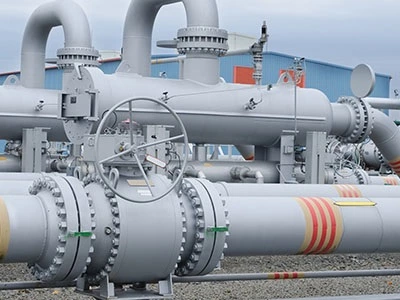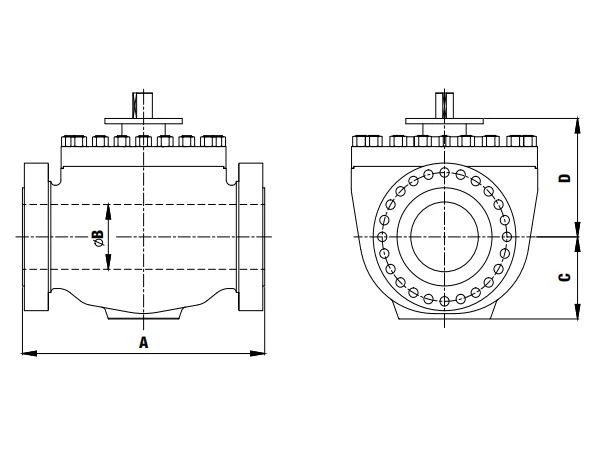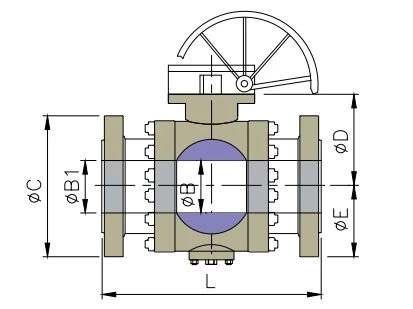Ball Valve Torque Values
Ball valve torque value tables for breakaway torques from the closed position under 100% differential pressure. The torque covers floating ball valves and trunnion mounted ball valves with soft seat. Breakaway torques are determined by measured after the valve has been in the closed position under pressure for a set time period, and are the highest torques expected.
Floating Ball Valve Torque Values
| Siz (Im) | Design Torques(N.M) | ||||
| 150LB | 300LB | 600LB | 900LB | 1500LB | |
| 1/2 | 3 | 7 | 19 | 25 | 42 |
| 3/4 | 5 | 12 | 35 | 55 | 72 |
| 1 | 11 | 26 | 68 | 108 | 155 |
| 1-1/2 | 16 | 38 | 130 | 195 | 275 |
| 2 | 25 | 60 | 190 | 264 | 420 |
| 2-1/2 | 50 | 120 | 360 | 435 | 568 |
| 3 | 65 | 160 | 460 | 650 | 836 |
| 4 | 125 | 280 | 770 | ||
| 6 | 410 | 950 | |||
| 8 | 700 | ||||
Trunnion Mounted Ball Valve Torque Values
| Size (In) | Design Torques (N.M) | ||||
| 150LB | 300LB | 600LB | 900LB | 1500LB | |
| 2 | 25 | 60 | 190 | 268 | 426 |
| 3 | 65 | 160 | 460 | 646 | 1032 |
| 4 | 125 | 280 | 770 | 1092 | 1756 |
| 6 | 410 | 950 | 1980 | 2790 | 4088 |
| 8 | 700 | 1550 | 3280 | 4625 | 7349 |
| 10 | 1109 | 2010 | 5250 | 7665 | 12164 |
| 12 | 1750 | 3320 | 7219 | 10152 | 16293 |
| 14 | 2669 | 5010 | 9860 | 13804 | 21907 |
| 16 | 3910 | 7530 | 14500 | 20445 | 31894 |
| 18 | 6220 | 11819 | 19610 | 27636 | 44190 |
| 20 | 7530 | 14400 | 29030 | 40890 | 64933 |
| 22 | 8750 | 16800 | 35750 | 50372 | 79587 |
| 24 | 10570 | 19600 | 42520 | ||
| 26 | 12250 | 24340 | 49518 | ||
| 28 | 14521 | 28200 | 58500 | ||
| 32 | 21052 | 29800 | 62015 | ||
| 36 | 28040 | 54510 | 109502 | ||
| 40 | 35030 | 65800 | 137510 | ||
Notes:
1、The torque values are based on common temperature, PTFE for Class 150 to 300, and Nylon for Class 600 to 1500Lb.
2、For low temperature working condition, the torque values will be increased to 2 to 2.5 times.
3、The torques values in the table are for reference,determining the type and size of the actuators. We recommend a safety factor of 1.3 to 1.5.
4、The torque values will vary with the medium and the seat materials.
Factors Effect The Torque Values
Seat Materials:
The seat materials used in a valve will significantly influence operating torque. Softer, lower-friction seats (such as TFE and TFM) will be lower in torque than the harder, higher-friction-factor materials (such as Delrin and PEEK).
Service Application:
How the valve will be operated and how frequently it will affect actuator selection and torque. Infrequent operations will require higher torque values than for valves in modulating services, for example. Service factors are provided in the tables at the end of this bulletin.
Line Media:
What is flowing through the valve can have the most significant effect on valve operating torques. Fine solids, slurries, or very viscous fluids can have great effect, not only on torque but also on valve service life.


